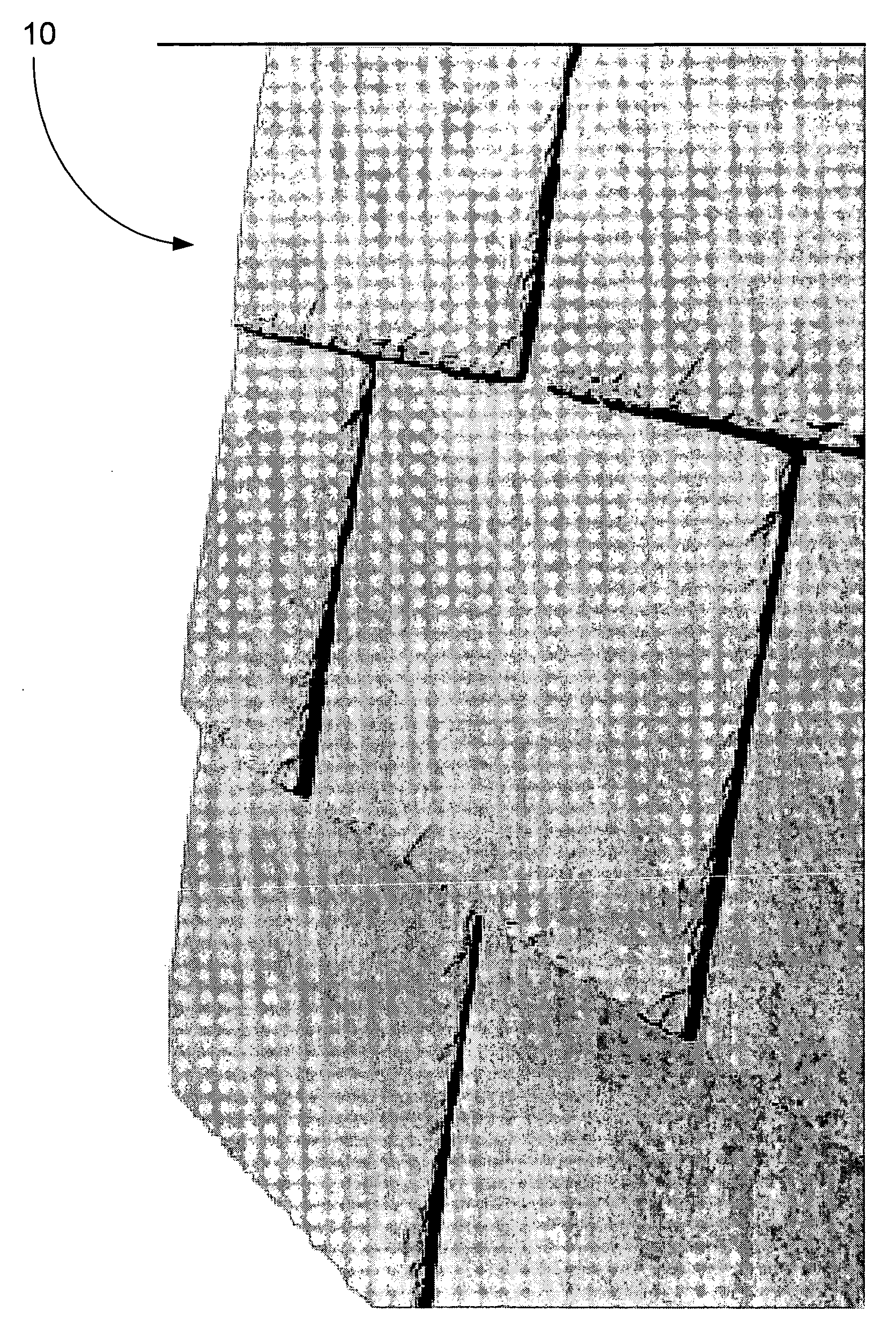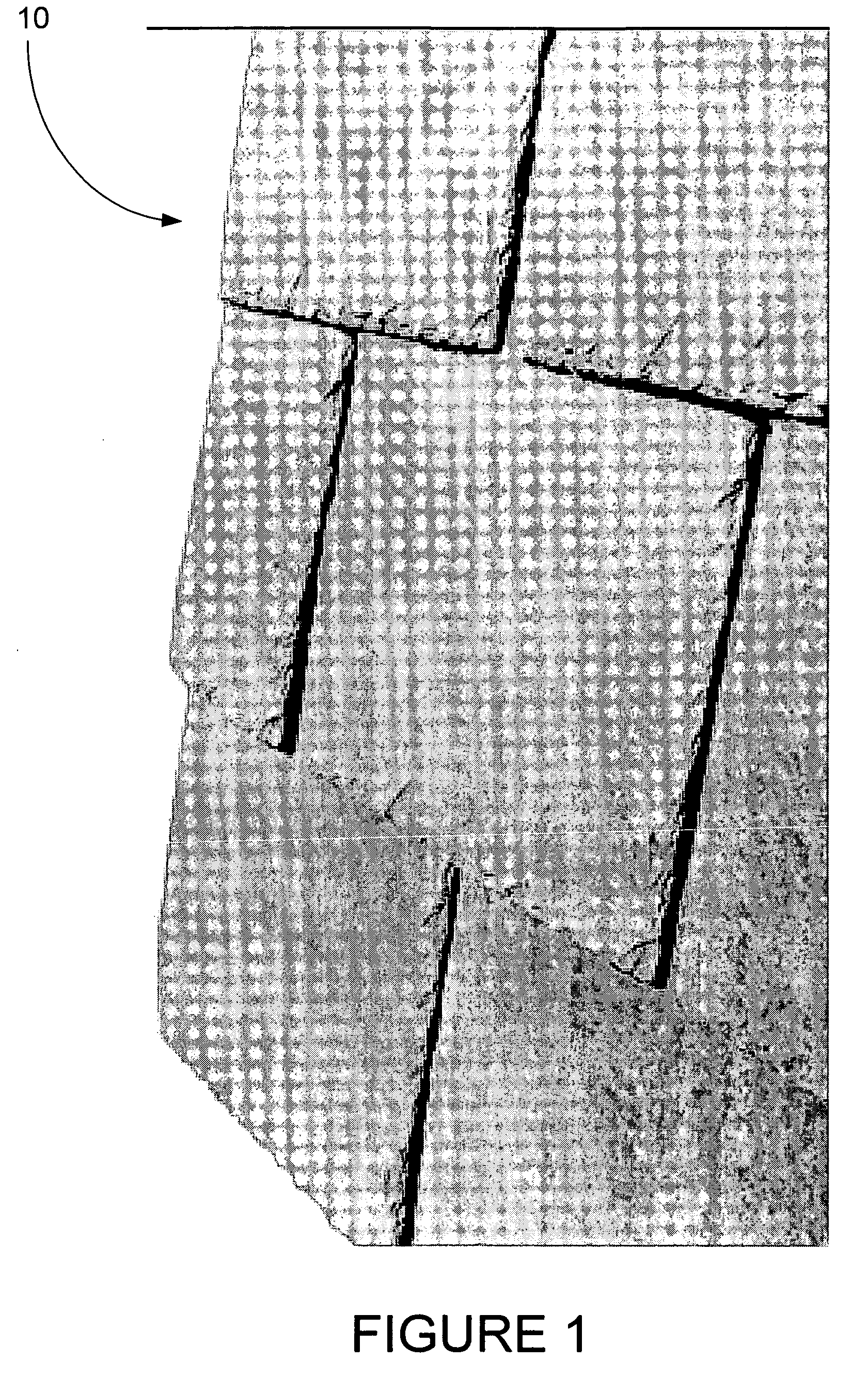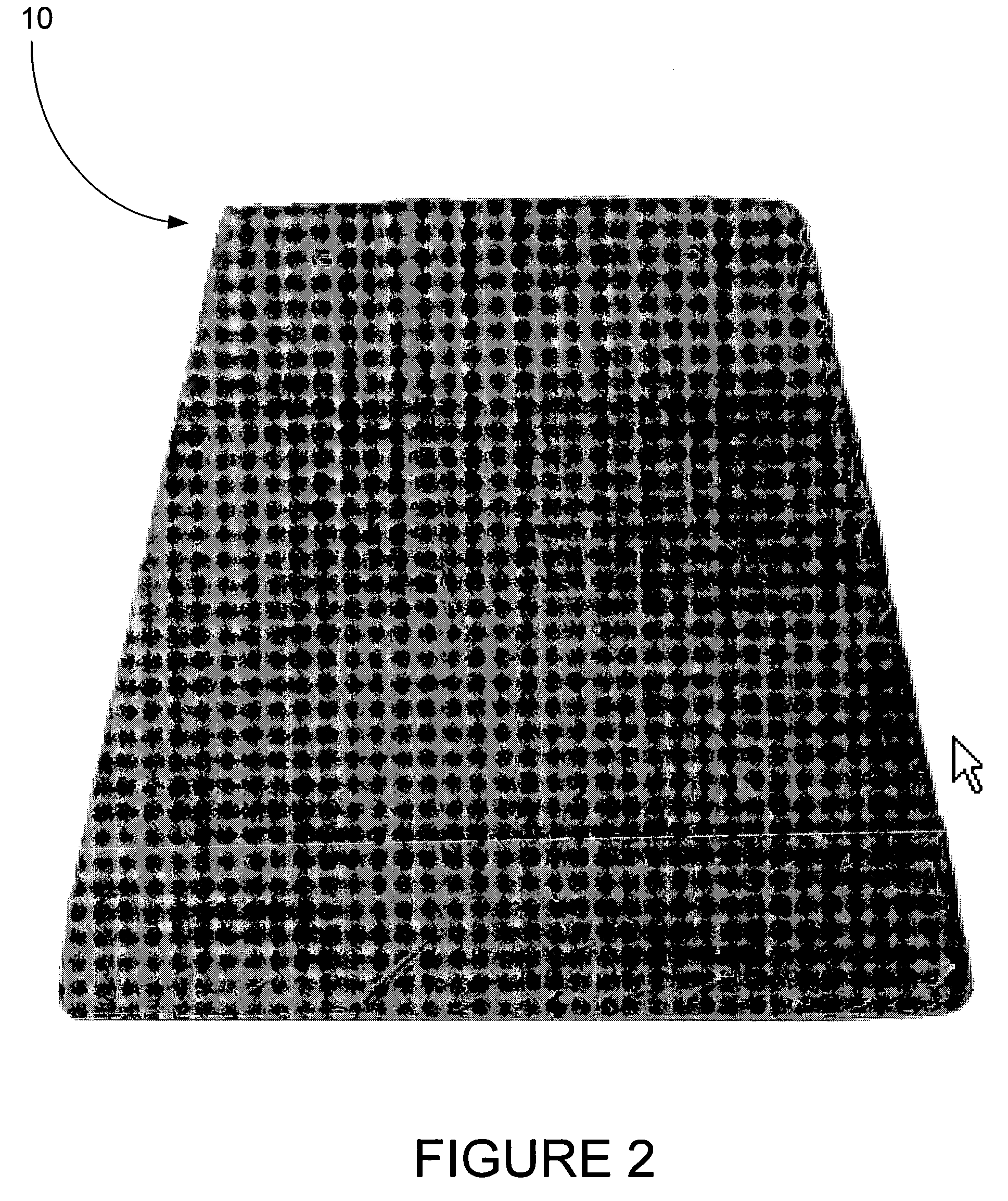Synthetic roofing and siding material
- Summary
- Abstract
- Description
- Claims
- Application Information
AI Technical Summary
Benefits of technology
Problems solved by technology
Method used
Image
Examples
Embodiment Construction
[0031] The present invention is a method of producing synthetic building materials 10 which can be used as roofing and sliding for structures, a formulation for synthetic building materials and panels of synthetic material made from the disclosed formulation.
[0032] The suitability of building materials is judged on the basis of many different qualities. Some of these are formalized as criteria which are tested by the International Council of Building Officials (ICBO). These criteria are discussed below, but generally, building materials are preferred to have the qualities of being lightweight, inexpensive, sturdy, waterproof and weather-resistant, easily formed into panels or other shapes, and fire-resistant. In addition, it is desirable that materials be at least partly from recycled materials, thus avoiding expenditure of further resources and providing a market for recycled materials.
[0033] Also, as discussed above, there are advantages to forming plastic or plastic-like materi...
PUM
| Property | Measurement | Unit |
|---|---|---|
| Fraction | aaaaa | aaaaa |
| Thermoplasticity | aaaaa | aaaaa |
| Water absorption | aaaaa | aaaaa |
Abstract
Description
Claims
Application Information
 Login to View More
Login to View More - R&D
- Intellectual Property
- Life Sciences
- Materials
- Tech Scout
- Unparalleled Data Quality
- Higher Quality Content
- 60% Fewer Hallucinations
Browse by: Latest US Patents, China's latest patents, Technical Efficacy Thesaurus, Application Domain, Technology Topic, Popular Technical Reports.
© 2025 PatSnap. All rights reserved.Legal|Privacy policy|Modern Slavery Act Transparency Statement|Sitemap|About US| Contact US: help@patsnap.com



